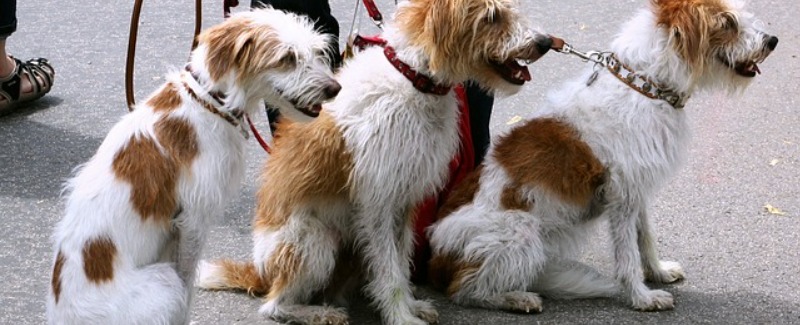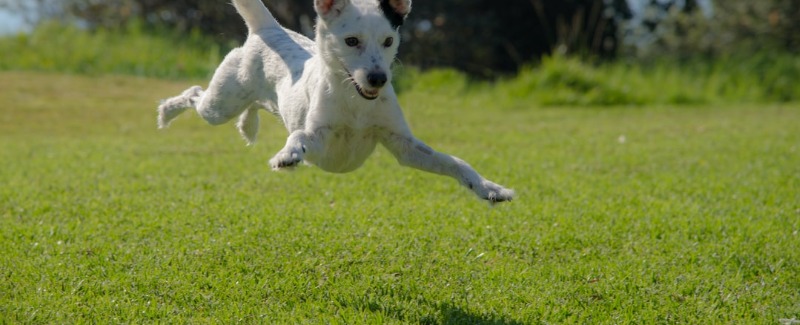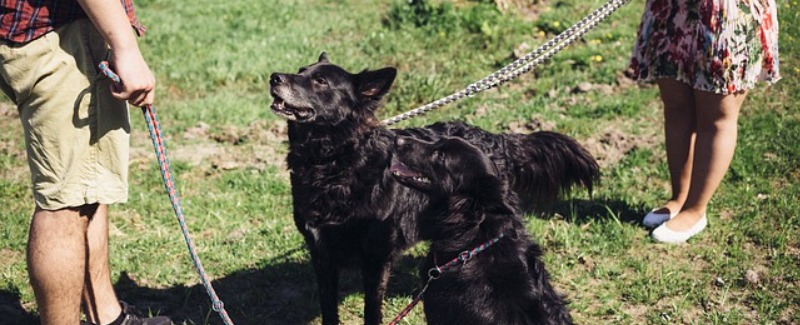There are so many ways that the wait command can help your dog stay safe. From dashing through doors or gates, to bolting from cars or crates, your dog can really put himself in harm’s way if he doesn’t know to wait and rely on your infinitely better judgment about whether it’s okay for him to proceed.
Deterring Door Dashers
If your dog has a habit of dashing through open doorways or gates, only to lead you on a merry (at least for him) chase around the neighborhood, you must do whatever it takes to manage him to make sure he doesn’t get to practice his technique anymore. Seeing your dog narrowly avoid being run over by a car — or worse — is an adrenaline rush you don’t need, so in addition to managing him well, you also have to teach your dog that every time he wants to go through a door to the outside, he must sit, give eye contact, and wait to be released. Every single time until he does it without being asked.
To teach the wait command, make sure you first have him sit in a position so that he’s not blocking the door and you can open it all the way without hitting him. Tell him to wait, and then crack open the door. Gradually open the door enough for you to get through it, being ready to help your dog if he gets up by quickly closing the door and starting over, applying leash pressure as you did for putting the food bowl down, or both.
When your dog can sit there on a loose leash with the door wide open, step through the doorway yourself, then call him through. Correct him as many times as you need to so you can get all the way through the door with him waiting inside — no cheating by letting him go if you were “about to release him anyway.” Either you release him, or he doesn’t get to come through.
For safety during training sessions, and as a good correction, don’t just have your dog on leash, but also let him drag a long (25 feet, with a knot tied every 5 feet in the line) dragline.
A Correction for Door Dashers
- Stand on the dragline with both feet fairly near the free end. Make sure there is at least one knot between your foot and the end, and that you’re wearing sturdy shoes.
- Practice sit, eye contact, and wait for release at the door on leash a few times, making sure every time you come back in to the room after going through the door you step back on the line.
- After a few successes, make a show of quitting the training session. Say “all done” and remove the leash, but keep the dragline attached, and remain standing on the line.
- Without giving your dog a command, open the door wide, and if your dog bolts through it, shut the door on the dragline, so your dog is stuck out on the stoop all by himself (safely restrained from running by the line) and you’re inside
- Wait about a minute, then open the door and make a big deal of welcoming your dog back into the house
There are some dogs that you won’t be able to catch more than once with this little trick, but it is effective, and takes all the fun out of charging through the open door.
Bolters
If you learn nothing else from this book, learn this: never let your dog bolt out of a crate or out of a car — ever. Not even once, not even if he’s happy to see you in your own home, not even if your car is in your own garage with the door closed. Maybe next time your dog will be in a crate at the airport, or you’ll be parked on a busy street. Bad things happen in an instant, and when a tragedy is so easily preventable, there is just no excuse for letting him bolt. The beauty is that this behavior is easy to teach.
Practice your car-exit strategy in a safe environment regularly so the behavior will be there when you need it. If your dog only gets in the car a few times a year to go to the vet or groomer, he won’t get enough practice to build the habit of waiting in the car.
When you’re going to let your dog out of his crate, open the door just an inch or so, closing it quickly and sharply with a firm “wait” command if he tries to shove his way through. Keep going until you can get the door all the way open and then call him out of the crate. Make sure you can touch his collar before he comes all the way out.
Your dog should be restrained in some way in the car, whether in a crate or with a seat belt, but the important thing is that he never gets the idea that he can come out of the car without having a leash on and being verbally released from it. Always attach the leash before detaching the seat-belt restraint, or using the crate method described earlier if he rides crated. Have him sit before snapping on the leash as an extra safety measure.



